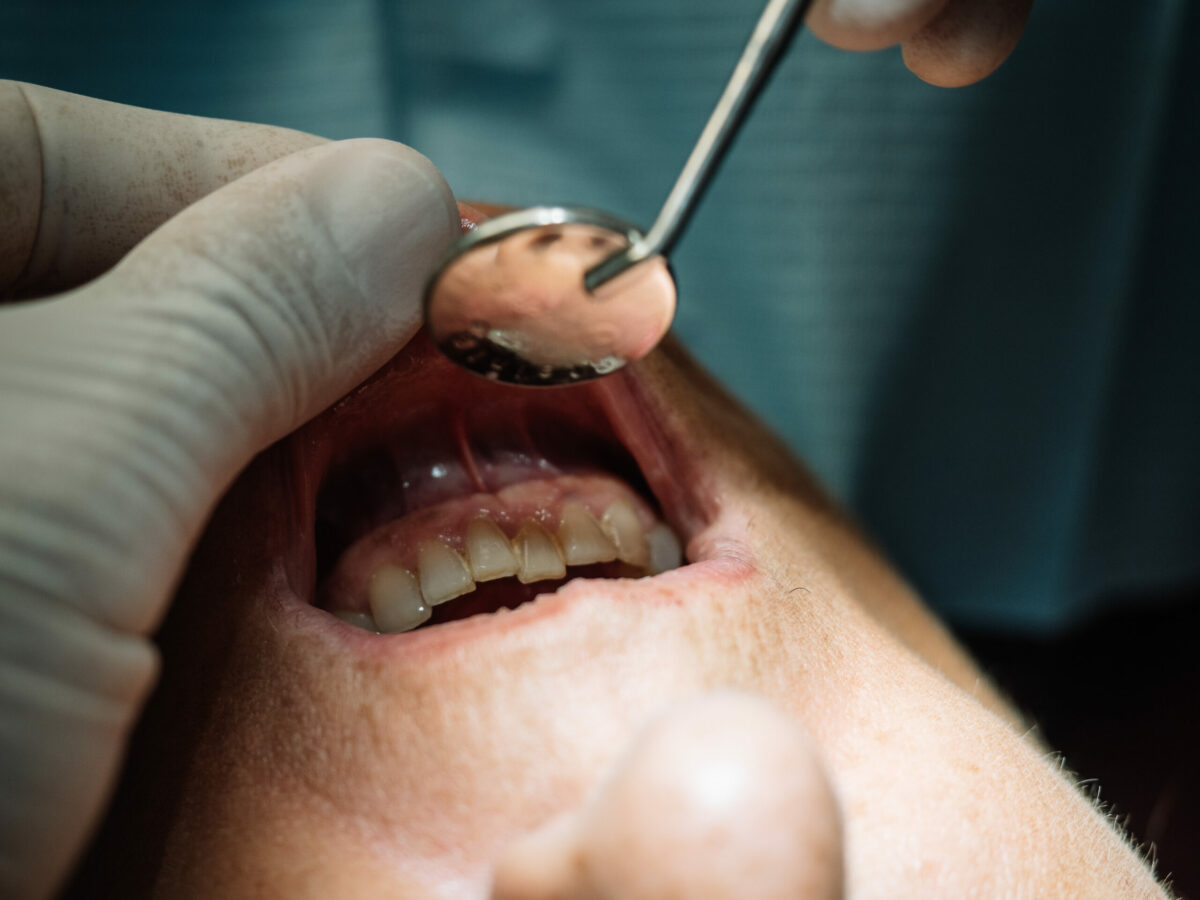This is a mild and common form of gum disease and it is called gingivitis or periodontal disease. However, it causes redness, swelling, irritation, and bleeding of the gingiva (a part of the gum that is located around the base of the teeth). Although it is a mild gum disease it should be treated promptly. Otherwise, it may lead to a more serious condition (periodontitis) and tooth loss.
In most cases, this condition occurs due to not cleaning the teeth and gums. To prevent or reverse the condition usually help good oral habits (such as brushing the teeth at least twice daily, regular dental checkups, and flossing daily).
Symptoms
When the gums are healthy they have pale pink color and are firm. Moreover, gums fit around the teeth tightly. Check below some symptoms of gingivitis:
- Puffy and swollen gums
- Bright or dark red gums, or are darker than usual
- Bad breath
- Gums are bleeding easily when you floss or brush
- Tenderness
You should visit a dentist as soon as possible if any of the previous symptoms occur.
Causes
Poor care of gums and teeth is the most common cause of gingivitis. As a result, plaque forms on teeth causing swelling of the gum tissues. Check below how the plaque leads to this gum disease:
- The plaque begins to form on the teeth – The plaque is an uncolored sticky film that is produced by bacteria after eating food sugars and starches. It should be removed daily because it appears quite fast.
- Plaque turns into tartar – When plaque stays on the teeth for long periods, it may harden under the gum line. This hardening is known as tartar or calculus. However, it is quite hard to remove the tartar and usually needs professional dental cleaning.
- Swelling and irritation of the gingiva – The gingiva is a part of the gum that surrounds the base of the teeth. The condition usually happens when the tartar and plaque remain on the teeth for long periods, making them swollen. If you ignore the symptoms and do not treat the condition it may lead to periodontitis and tooth loss.
Risk Factors
This is a common health condition that may affect anyone. However, the following factors may increase your risk even more. Examples include:
- Poor oral care
- Older people
- Smoking or chewing tobacco
- Poor nutrition (such as not getting enough vitamin C)
- Dry mouth
- Teeth repairs that do not fit properly or are in poor condition (including fillings, bridges, dental implants, and veneers).
- Crooked teeth
- Health conditions that cause weakness of the immune system (including cancer treatment, HIV/AIDS, leukemia, and others)
- Some medicines (such as Phenytoin used to treat epileptic seizures, calcium channel blockers used for angina, hypertension medicines, and others)
- Hormonal changes (such as those that occur during pregnancy)
- Gene mutations (changes)
- Certain health conditions (such as viral and fungal infections)
Complications
If this gum disease is not treated, it may lead to a more serious health condition called periodontitis. If you experience periodontitis it may lead to tooth loss.
Sometimes, if you experience gum disease it may be related to other health conditions that negatively affect the whole body. These include diabetes, coronary artery disease, stroke, rheumatoid arthritis, respiratory conditions, and others. As per studies, the bacteria that cause periodontitis may enter the bloodstream through the gum tissue and negatively affect the heart, lungs, and other body parts. However, more research is needed to confirm this.
Another complication of gingivitis is trench mouth also called ANUG (acute necrotizing ulcerative gingivitis) or Vincent’s stomatitis. It causes infected, painful, bleeding gums, and ulcers. This condition occurs commonly in developing countries that have poor nutrition and living conditions.
How to Prevent Gingivitis?
The following tips may help you prevent or avoid this gum disease. Examples include:
- Good oral care – It includes brushing the teeth at least twice daily (such as in the morning and before going to bed) and flossing at least once daily. Some people should brush their teeth after every snack or meal. Moreover, flossing before brushing the teeth helps clean loosened food and bacteria.
- Regular dental checkups – It is advised to visit a dentist every 6 or 12 months but if you have risk factors that elevate the risk of periodontitis, you may need to visit a dentist more frequently.
- Healthy lifestyle choices – These include eating healthy food (such as fresh fruits and vegetables and whole grains), management of chronic conditions (such as diabetes), and others. Discuss with your healthcare professional for more details.
Diagnosis
Commonly, dentists diagnose this condition based on the following factors. Examples include:
- Dental and medical history review
- Mouth examination to check for abnormalities (such as irritation, swelling, or plaque)
- Measurement of the pocket depth of the groove between the gums and teeth. If the pockets are deeper than 4 mm (millimeters) it indicates gum disease.
- Dental X-rays
- Sometimes, doctors may perform additional tests to check for other diseases.
Treatment
Commonly, good oral care can reverse gingivitis symptoms and prevent more serious gum disease and tooth loss. To increase the chances of successful treatment, it is advised to practice good oral care every day and quit smoking. Check below what professional gingivitis care includes:
- Dental cleaning – During this procedure, your dentist will remove all traces of plaque, tartar, and bacterial products. Dental cleaning is also called scaling or root planing. While scaling removes tartar and bacteria from the teeth’ surface, root planing helps remove bacterial products caused by swelling and irritation. In addition, previous procedures also help reduce the risk of buildup of tartar and bacteria in the future. Commonly, doctors perform this procedure using a laser or an ultrasonic device.
- Dental repairs – Dentists may recommend dental repairs if they are a part of your gingivitis. Poorly fitting crowns or crooked teeth make it difficult to remove plaque.
- Ongoing care – The gingivitis goes away right after professional cleaning as long as you practice good oral care every day at home.
In most cases, healthy gums return within days or weeks if you follow your dentist’s recommendations and regularly brush and floss your teeth.
Frequently Asked Questions
Can gingivitis go away on its own?
Sometimes, this gum disease may go away on its own but it may last a long time, spread, and develop into periodontitis.
Can gingivitis be reversed by brushing and flossing the teeth?
Yes, with good oral care (including brushing and flossing the teeth at least twice daily) you may get rid of gingivitis within 2 weeks.
What is the primary cause of gingivitis?
Most people who suffer from this condition have it due to poor oral care or improper technique. If you have additional questions, ask your healthcare provider.




